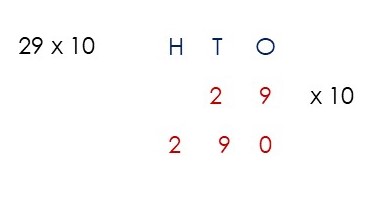Many children worry about maths, and often this anxiety is shared by a parent.
How can you help your child to feel more confident about maths?
1 Let your child see you using maths for daily tasks
Often, it’s the uncertainty of where maths fits into daily life that can be off-putting – for children and for adults.
Money is part of everyday life and children are often unaware that they are using maths skills when they spend money. And who doesn’t enjoy spending money?
Making your child aware that you have to budget (obviously not too much detail), pay for shopping, get change, pay bills, sell stuff on Ebay … Maybe encourage them to budget with their birthday money, savings or pocket money. Perhaps get them to work out how much would they have in a year if they saved so much each month? What could they buy with that? Or if there’s something they would like to buy, how long would it take to save up for it? How much should they save each week or month?
Also, planning television and computer time together and working out how much time you have for other activities. TV guides are a great way to get children thinking about time and solving time problems, and most guides can be accessed online.
If you’re cooking – or thinking of doing a bit of DIY around the house or garden – let your child get involved. Most children love weighing and measuring stuff, and it’s all good for their understanding of maths.
2 Let your child plan an event
It doesn’t have to be a party – it can be anything that has a real purpose.
Some of the things mentioned in the first point above, such as helping with cooking – maybe planning a feast for a sleepover. What food will be needed and how much will it cost? Do you need to adapt the quantities of a recipe? That’s a great way to introduce Ratio and Proportion.
3 Use colours
I discovered recently that a lot of children see colours in their minds when they think of certain numbers. Let your child loose with coloured crayons/ pens/ felt tips and get them to do number puzzles or even just write out whichever multiplication tables they are learning. See what happens – they might surprise you with what they can do with numbers when colours are involved.
Even activities such as putting coloured beads or Lego bricks into patterns can be a huge help for children who often see maths as something scary.
4 Give your child puzzles to solve
They don’t even have to be number puzzles. Anything, such as ‘What’s the biggest word you can make out of the word “mathematics”?
Choose three digits from between 0 and 9. How many different numbers can you make? What’s the biggest number? What’s the smallest? What about if you use four digits?
If you sign up to my newsletters here, you’ll receive links to puzzle sheets that introduce sudoku – start with smaller grids, using colours and shapes, before trying 9×9 grids using digits.
You’ll also get a free link to the videos that explain how to solve the puzzles. Great for helping adult beginners too!

5 Don’t let them see your fear!
If you’re unsure of maths, don’t let that become an excuse for your child. I hear so many parents complain, ‘She gets her inability to do maths from me’.
Children don’t necessarily inherit an inability, but they can sniff out fear; if they think maths is something to be afraid of, there’s an increased chance they will struggle with it.
Keep working on your own maths knowledge, even if it’s just for a few minutes a week. It all adds up, and you might even enjoy it!




